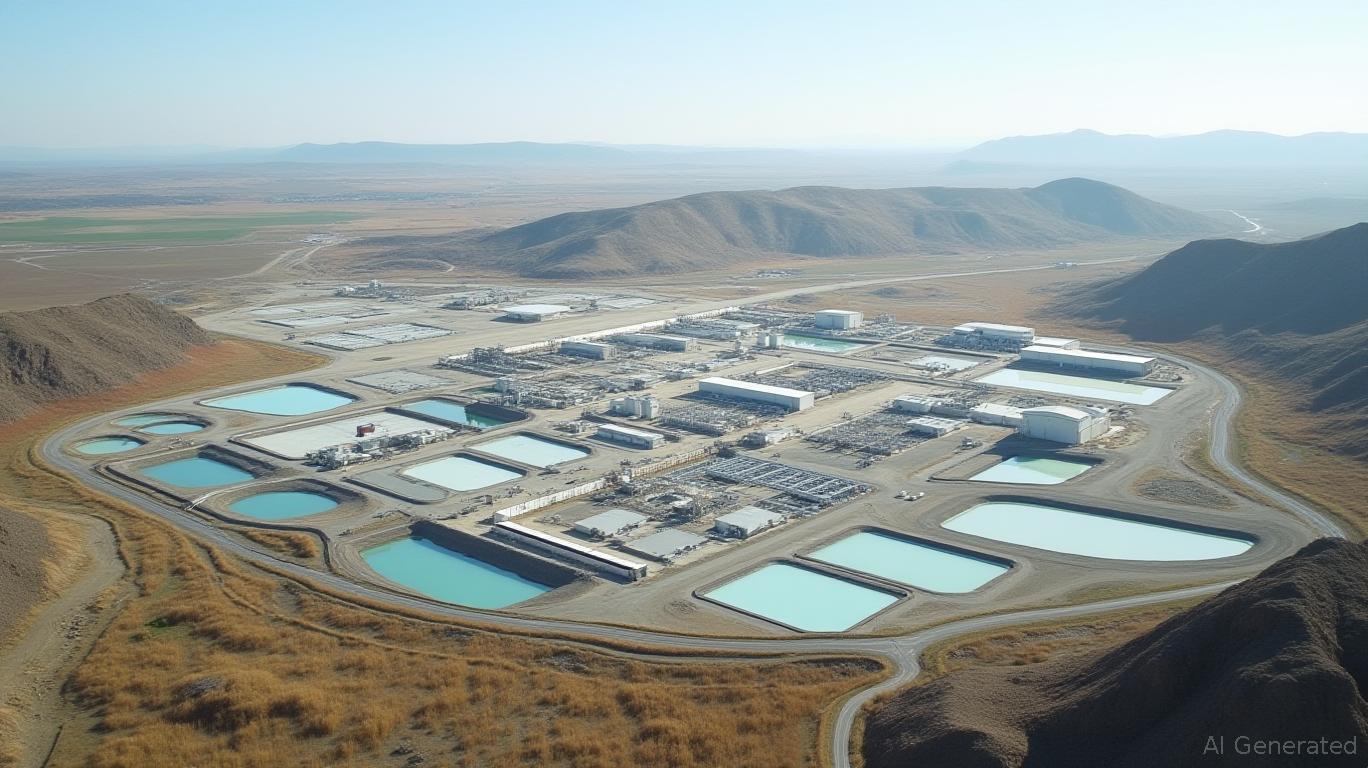AbbVie's Transition to a New Era of Growth Takes Hold in Q1 2025
AbbVie Inc. (ABBV) has turned a page in its post-Humira era, delivering first-quarter 2025 results that underscore the company’s successful pivot toward newer therapies. Despite ongoing declines in its blockbuster arthritis drug Humira, AbbVie’s earnings report reveals a pharmaceutical powerhouse leveraging its robust pipeline to fuel growth. Here’s what investors need to know about the quarter’s performance and its implications for the future.

A Strong Start to 2025: Revenue Grows, Adjusted EPS Surges
AbbVie’s Q1 revenue rose 8.4% to $13.34 billion, driven by stellar performance in its immunology and neuroscience portfolios. While GAAP diluted EPS dipped to $0.72 due to one-time costs tied to in-process R&D (IPR&D), adjusted diluted EPS soared 6.5% to $2.46, exceeding expectations. This marks the second consecutive quarter of adjusted EPS growth above 6%, a clear sign of operational resilience.
The company also raised its full-year adjusted EPS guidance to a range of $12.09–$12.29, up from its previous forecast. This upward revision reflects confidence in its ability to navigate headwinds from Humira’s generic competition and maintain momentum in high-growth areas.
The Rise of Immunology: Skyrizi and Rinvoq Lead the Way
The immunology portfolio was the star of the quarter, growing 18.1% operationally to $6.26 billion. Key highlights include:
- Skyrizi (up 72%): The psoriasis and Crohn’s disease drug reached $3.43 billion in sales, benefiting from label expansions and strong demand.
- Rinvoq (up 59.7%): Sales hit $1.72 billion, fueled by its EU approval for giant cell arteritis (GCA) and other indications.
These two drugs are now the engines of AbbVie’s growth, compensating for Humira’s steep decline (down 58% in the U.S. due to generics). With combined sales of nearly $5.15 billion in Q1, they’ve already outpaced Humira’s $1.12 billion in sales by a wide margin.
Neuroscience and Oncology: Diversification Pays Off
The neuroscience portfolio grew 17% operationally to $2.28 billion, driven by:
- Qulipta (up 48.3%): The migraine preventive drug reached $193 million in sales, a critical gain in a competitive space.
- Vyalev (new Parkinson’s drug): Launched in Q1, this novel therapy generated $63 million, signaling promise in a underserved market.
In oncology, AbbVie’s acquisition of ImmunoGen continues to pay dividends. Elahere, an ovarian cancer therapy, contributed $179 million in sales, while Venclexta (for leukemia) grew 12.3% operationally. However, Imbruvica (for blood cancers) declined 11.9%, reflecting increased competition.
Aesthetics: A Soft Spot, But Strategic Bets
The aesthetics segment, home to Botox Cosmetic and Juvederm, saw a 10.2% operational decline to $1.10 billion. Botox Cosmetic fell 12.3%, while Juvederm dropped 22.2%. Despite this, AbbVie is doubling down on long-term growth with three new U.S. training centers for aesthetics providers. This investment aims to rebuild demand in dermal fillers and position the company for future trends like rapid-onset botulinum toxins.
Risks and Challenges Remain
AbbVie’s success isn’t without hurdles. Humira’s decline is still a drag, and generic competition in oncology (e.g., Imbruvica) poses threats. Additionally, the company faces geopolitical risks, as its guidance assumes no new U.S. pharmaceutical tariffs—a volatile assumption given ongoing trade debates.
The Bottom Line: A New Era of Growth, But Not Without Speed Bumps
AbbVie’s Q1 results confirm its transition to a post-Humira era is succeeding. The company’s pipeline is now its greatest asset: Skyrizi and Rinvoq are on track to become multibillion-dollar franchises, while Qulipta and Elahere offer promising oncology and neurology growth. With adjusted EPS guidance raised and operational margins expanding (adjusted operating margin rose to 42.3%), AbbVie is proving it can thrive through disruption.
However, investors must remain cautious. The aesthetics division’s struggles highlight reliance on consumer discretionary spending, and the oncology portfolio’s vulnerability to competition means no drug is untouchable. Still, with a 3.5% dividend yield and a 2025 EPS growth trajectory above 6%, AbbVie offers a compelling mix of stability and innovation.
In the end, AbbVie’s Q1 report is a testament to strategic execution. By doubling down on its pipeline and leveraging data-driven decisions (e.g., the ImmunoGen acquisition), the company is positioning itself to outpace peers in an increasingly competitive biopharma landscape. For now, the skies may be clear—but investors should keep an eye on the horizon.


_442a2dcc1749832873286.jpeg)
_e68fac6d1749831664430.jpeg)






